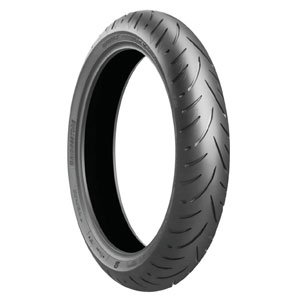6 Highest Rated Motorcycle Tires for Touring
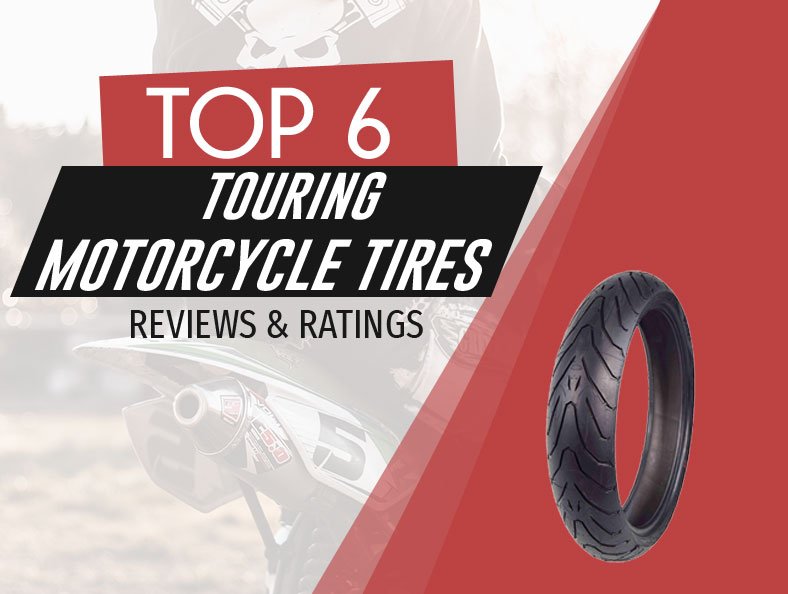
Road Racerz is proudly supported by our readers. Products purchased through links on our site may provide us a commission. Learn More
Do you know the difference between sport and touring tires? Sportbikes need feel and grip while touring riders require longevity and mileage.
If you have a touring bike, you need traction and stability. Sadly, this is something not every model can deliver. People who ride big and luxury tourers usually cover long distances, and for this, you need all the right equipment.
Having the right tires makes all the difference. Stick around to discover the top touring motorcycle tires if you’re looking for performance, durability, and high-end technology. You’ll also find our buyer’s guide with some info on how to choose the best product.
Our 6 Top Rated Touring Motorcycle Tires Reviewed
| PRODUCT | FEATURES | |
|---|---|---|
Pirelli 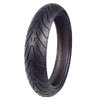 | Pirelli Key Features: Environmentally friendly advanced compounds, holder of 7 wold records, good for heavy, large-displacement motorcycles Rim diameter: 17 inches | Check Price |
Bridgestone 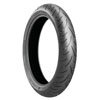 | Bridgestone Key Features: Large contact patch, suitable for cold weather, innovative pattern design and compound upgrades Rim diameter: 17 inches | Check Price |
Metzeler 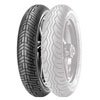 | Metzeler Key Features: Reduced rolling resistance, it looks sporty and stylish, great wear regularity Rim diameter: 18 inches | Check Price |
Dunlop Tires 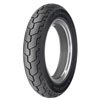 | Dunlop Tires Key Features: Great grip and balance, for all weather conditions, built with a three-ply polyester casing Rim diameter: 16 inches | Check Price |
Shinko 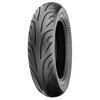 | Shinko Key Features: Good mileage, budget-friendly, aramid belted radial construction Rim diameter: 16 inches | Check Price |
Michelin 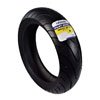 | Michelin Key Features: Improved stability, excellent grip, long-lasting, dual-compound technology Rim diameter: 17 inches | Check Price |
Pirelli – Street Sport
This is among the best choices if you’re looking for both front and rear type. Both are made from advanced eco-friendly compounds.
The creative tread design is functional and made to deliver enough grip and traction. On top of that, its patented 0-degree steel belt radial structure helps to provide stable and well-balanced experience on both wet and dry surfaces.
This Pirelli model is quite popular because of its predictable grip in different conditions. It’s good for heavy, large-displacement motorcycles like the Kawasaki Concours 14 and Suzuki Hayabusa.
The reason why riders opt for these is improved performance.
These can go on for thousands of miles before showing any signs of wear and tear. On top of that, they’re comfortable and stylish as well.
PROS
- For speeds of 168+ mph
- Long-lasting
- Stylish
CONS
- Some people received 2012 models
Bridgestone – Wet Grip Performance
This is a new generation of Bridgestone called Battlax Sport Touring T31. It provides instant feedback, comfort, and wet grip performance.
This one looks sporty and stylish, so it’s a good fit for most tourers. It provides a safe feeling thanks to its innovative pattern design and compound upgrades. This helps make you feel confident regardless of the weather and road conditions.
The manufacturer went the extra mile to increase the silica dispersion inside the rubber. Thanks to the innovative technology, this Bridgestone provides great performance in low temperatures and wet conditions.
Its contact patch is quite large, which provides a higher camber thrust in all lean angles. This adds a bit to the overall quality or performance, improving handling in different situations.
PROS
- For wet and dry conditions
- Large contact patch
- Suitable for cold weather
CONS
- Not the most long-lasting
Metzeler – All-Weather Riding
This is a front tire in size 100/90-18. It features a classic tread pattern design that ensures outstanding water dispersal in order to provide safe riding in wet conditions.
The tread pattern design also plays a major role in its overall long-lasting mileage and wear regularity. For this reason, Metzeler Lasertec Bias is among the best choices for long-distance trips and extended adventures.
It looks sporty and stylish, so you probably won’t have any issues pairing it with your bike. A rear one is available as well, in case you need to replace both of them at some point. Read more on how to change your tires.
Another great thing to mention is that these come in several sizes. This adds quite a lot to their overall versatility, making them an ideal choice for most tourers.
PROS
- Unique tread design
- Great wear regularity
- Reduced rolling resistance
CONS
- Reportedly challenging to install
Dunlop Tires – Great Stability
Dunlop D402 is the only tired that’s approved by Harley Davidson for the brand’s touring motorcycles. For this reason, there’s hardly a better choice for you if you ride a Harley.
The D402 is built with a three-ply polyester casing. As such, Dunlop D402 gives impeccable load-carrying capacity, balance, and stability.
The tread profile is computer-optimized with an offset center groove. This improves your confidence, allowing you to ride with more stability across different surfaces. Another thing worth noting is the reduced cupping that allows even wear.
Although Harley approves Dunlop D402 for its tourers, it’s equally as suitable for other tourers as well.
The specially formulated compound brings better handling and performance in different conditions.
Keep in mind that there’s a Harley-Davidson branding on the sidewalls.
PROS
- Great grip and balance
- Even wear
- For all weather conditions
CONS
- Harley branding on the sidewalls
Shinko – Budget Friendly
Shinko has always been among the most popular options for riders who are on a budget. Pretty much all their products are budget-friendly and affordable, which is just one of the things the brand is known for.
Shinko SE890 Journey touring rear tire is made to deliver the well-known quality at a lower price. The radial design is meant to be used with large touring bikes and cruisers.
It features an Aramid belted radial construction and 5-ply rated tread. It also has 3-ply rated sidewalls. The tubeless tire is H-rated for speeds up to 130 miles per hour.
It offers great load-carrying capabilities and comfort regardless of the weather conditions.
The tread compound provides excellent grip, although it might be a bit slippery when wet. Plus, it can go on for thousands of miles before showing signs of wear.
PROS
- Good mileage
- For all weather
- Affordable price
CONS
- A bit slippery on wet concrete
Michelin – Dual-compound Technology
As we said, tourers need a tire that can last a long time, offering excellent grip and performance. The Michelin Pilot Road 2 Sport is versatile and quick when it comes to warm-up time.
It’s made using the brand’s unique dual-compound technology that helped prolong its overall lifespan. Also, technology improved its stability and grip on all surfaces.
This Michelin model is among the best options if you’re often riding in wet weather. It delivers enhanced traction in wet weather, which improves your braking capabilities.
It’s crucial to mention its soft edges since they’re providing stability while cornering.
This is that much more important for when you’re riding on wet roads.
This Michelin is available in several sizes, which makes it highly compatible with a vast number of tourers.
PROS
- Improved stability
- Excellent grip
- Long-lasting
CONS
- Might be difficult to mount
How to Choose a Long Lasting Touring Tire?
Follow the Recommended Pressure
There’s a reason why bikes run the same pressure even if they have a different brand of tires.
It’s because the ETRTO sets the pressures based on the load applied through the axle. It’s an important factor to consider because the air inside is what supports you and your motorcycle.
You can find the recommended pressure in the owner’s manual that you received with your bike. If not, it’s likely located on a sticker on the swing-arm. Some manufacturers have this info on their website as well.
However, you must double-check this information. Don’t try to guess or listen to other people’s suggestions because pressures are rather specific.
You might come across a wide range of suggested pressures. This means you’ll have to adjust them based on whether you’re carrying luggage or not. However, if there’s only one pressure suggested, you don’t have to adjust it even if you’re carrying luggage.
Although you should follow the suggested pressure, you should keep in mind your bike’s maximum payload as well. You might hear people say that you should drop the pressure in wet weather. This is something you should definitely avoid because the tread pattern will close up due to deformation.
Go by the book, following the manufacturer’s suggestions without adjusting them unless the manufacturer advised you to do so in certain situations.
Consider The Motorbike's Weight & Power
Every tire is made to meet the requirements specifically set by the ETRTO (European Tire and Rim Technical Organization). These requirements are determined based on the motorbike’s front and rear axle loads.
For this reason, a bike manufacturer can’t really tell you which brand to go for. Instead, you need to follow its specifications for load rating, speed rating, and size.
This might seem a bit complicated, even more so if you’re a beginner since it requires a bit of skill and experience. Luckily, most manufacturers have a selector on their website, making it a bit easier to find the right fit.
On top of that, you can always call the manufacturer for some advice in case you need any. The recommendations you get by checking the websites or calling is quite reliable since these companies also work around the ETRTO specifications.
This gives you peace of mind, knowing that the tire you’re about to set is reliable, suitable for your particular bike, and safe to use.
It’s important to note that all models have a load rating defined in numbers. It’s the maximum weight that you can put on each tire. This is also known as the axle weight and is something the model of your choice should be able to take on.
Now, because it’s maximum weight, you can work around it in any way you want. In other words, this can be your weight or your weight combined with that of your passenger and luggage. What’s important is that you don’t exceed it.
Fitting a tire that has a lower or higher load rating than what’s specified for your bike is illegal. Not only can you pay a large fee for not respecting the set requirements, riding with such tires isn’t as safe either.
You should also check the speed rating – the single letter indicating the maximum speed that it can handle. Again, using a model with a lower or higher rating than required is illegal.
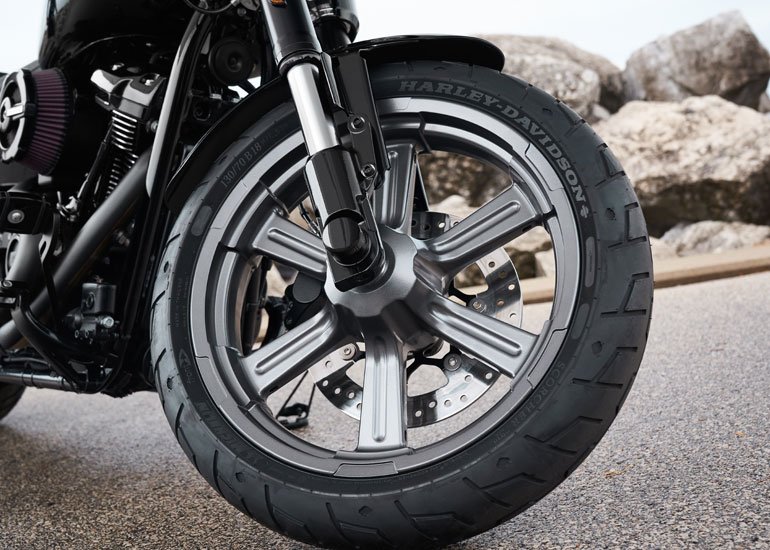
Checking Traction or ABS
ABS and traction control are the two best things that tire technology delivered recently. However, in the early days, ABS used to cause ‘heel and toe’ wear on the front tire. It happened due to aggressive pulsing that occurs when you break.
Although the system improved, it still generates heat due to excessive force applied rapidly. Over time, there’s a high potential for increased wear.
Still, a tire losing grip isn’t what triggers ABS. Complex algorithms, brake pressure, and wheel speed all have significant roles when it comes to braking traction and ABS. These factors work together to modulate brake pressure before it might lose grip.
Check if it's an Ideal Tire in the Rain
Tread patterns are designed to look stylish, but they also have a more significant role. Companies and manufacturers spend lots of money and time figuring out the best and most effective tread pattern to send water out of your way.
This is done so that water can get out of the way and leave a dry patch so that the tire can grip better. Try not to mix motorcycle tires because they’re designed as pairs and work as such the best. What happens is that the front one throws liquid out of the way, so when the one in the back runs over that patch of road, it deals with more water than it initially would.
Some front models are designed to throw water to the outside edge of a turn. As a result, the rear one doesn’t have to deal with as much water.
How to Properly Store Your Touring Motorbike
It’s natural to lose pressure over time, especially if you’re not riding for a month or longer. In this case, you should keep the motorcycle on padlock stands.
The carcass becomes slightly deformed as the air slowly permeates the rubber. This causes permanent damage. On top of that, cold concrete can also cause the tire to become brittle.
Keeping your bike off the ground is probably the best thing you can do if you won’t ride for a while. However, if you can’t do this, you should at least check the pressure and rotate them for 90° every week.
You can also put a carpet under them so that they don’t stand directly on cold concrete. Another thing you can do is inflate them to the max suggested pressure, but make sure to let some of that air out before riding again.
If you have to store loose tires or wheels, it has to be in a place where they’re protected against freezing temperatures. Direct sunlight can do just as much damage, so make sure to store them away.
One thing to remember is that tires have a life span. In most cases, they can last up to ten years, although most manufacturers guarantee for no longer than five years.
Check the date that’s usually located on the tire. The last four numbers after the DOT code indicate the week of the year and the year when it’s made.
Repairing Your Tires
Repairing is something you should be particularly careful with. For example, British Standard BSAU159F states that the tire with a speed rating of V can have a 3mm hole repaired only in the center 75% of the tread. However, it has to be on the top surface and not inside the grooves.
You should always get this done professionally. Motorcycle repair kits are available, but you shouldn’t rely too much on them. Use the kit to fix the problem quickly and easily, but make sure to have a professional look at it as soon as possible.

Frequently Asked Questions
How to scrub motorcycle tires in?
It’s always important to scrub new tires in. Although the industry recommendation is 200 miles, you should build up your lean angle. Also, be gentle with brakes and throttle.
The trick is in roughing up the surface so that it’s not as slippery. It’s a similar thing to what we do with a new pair of leather shoes. You have to break them in so that they’re more comfortable and better-fitting.
When it comes to motorcycle tires, you want to allow the plies inside the carcass to settle into one another.
Keep in mind that some companies claim that you don’t have to do this with their products. For example, Bridgestone claims that its products are high-quality and, as such, don’t require scrubbing when new. However, experts advise this nonetheless.
Will it last?
One of the most critical things that affect longevity is the correct pressure. It has a huge impact on how long your tire lasts, regardless of the particular brand you opted for.
As we previously mentioned, they can last up to ten years. However, most manufacturers only guarantee for five years, which is also something to consider.
The way you ride and how you store your tourer also plays a major role in how long they will last.
Conclusion
Tourers are among the most popular motorcycles because they’re versatile, fun, and stylish. However, much like every bike, tourers require specially designed tires to deliver their best performance.
Surely, you can get away with other models, but those that are meant specifically for a tourer will make a difference.
While having the right pair is critical, you should also be careful about how you store them. Hopefully, you found the best one for your bike in our list above. If not, you can always go back to check the guide and reviews, as we’re sure that there’s something for everyone’s needs and preferences.


